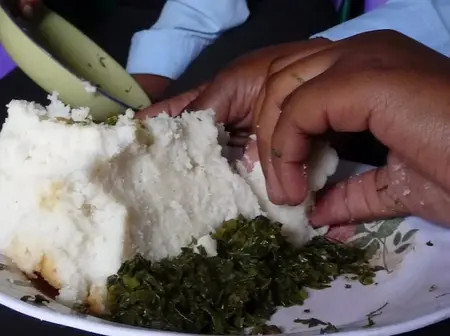Kenya’s monthly inflation rate rose steeply to 4.5% in August compared to 4.1% in July, edged up by a rise in the price of food and transport, the biggest items in the average household’s consumer basket.
According to data from the Kenya National Bureau of Statistics(KNBS), vegetables recorded the highest price increases with cabbages rising 6.3%, followed by carrots (2.4%), sukuma wiki (1.9%), and tomatoes (1.2%). Prices of white wheat flour and onion bulbs and leeks rose by 0.9% each, while prices of potatoes increased by 0.7%.
Passenger transport costs rose significantly, with the country bus/matatus fare for the Mombasa to Nairobi route recording a sharp increase of 15.4%. Similarly, local transport costs went up, as tuk tuk fares rose by 1.5%. Prepared food from cafés and take-aways prices rose by 0.3% while the price of beverages in hotels and restaurants prices increased by 0.3%. Overall, the price of food items consumed by Kenyan households has risen 8.3% over the last one year.
The price of beer (lagers and stouts) declined by 0.1%, while spirits prices climbed slightly by 0.5%. Miraa (khat) recorded the highest price rise within the category, increasing by 1.6%. The price of men’s leather shoes and shirts dropped by 0.3% and 0.1%, respectively. In contrast, kangas/kikois prices rose by 1.1%, girls’ school uniforms prices by 0.4%, and men’s suits prices were up 0.6%.
The price of medicines for cholesterol and blood pressure as well as fever and painkillers such as paracetamol declined by 0.2%. In contrast, prices of medicines for diabetes were up 0.6%, laboratory tests (0.4%), and general practitioner’s services (0.1%). Prices of body lotion, toilet soap and toilet/tissue paper rose by 0.2%, 0.4% and 1.6 %, respectively.
While the price mobile handsets fell by 0.2%, and TV sets by 0.1%, TV subscription fees for DSTV rose by 1.5% in August 2025. The International Monetary Fund (IMF) forecasts Kenya’s average monthly inflation at 4.1%, placing it within the target range set by the Central Bank of Kenya(CBK) of 2.5% to 7.5%.
Analysts forecast that inflation will remain under control due to consistent cutting of the policy rate by the CBK during the year, to stimulate demand in the economy.
Global oil prices have also remained stable, which has assisted in putting the lid on fuel prices. In August, kerosene prices fell by 0.6%, cushioning vulnerable Kenyan households from huge costs associated with cooking and lighting. Due to a lower fuel charge, Kenyan paid less for electricity in the month of August when Electricity charges decreased, with 50kWh band prices dropping by 2.3% and 200kWh band price declined by 2.1%.
The Kenya Shilling exchange rate against the US Dollar has also remained stable at KSh 129 for months, cushioning Kenyans against cost of imported goods. According to a forecast from Trading Economics, Kenya’s monthly inflation is expected to rise to 4,70% by December 2025. It is projected to trend around 3% in 2026 and 4.10% in 2027.

Leave a Reply